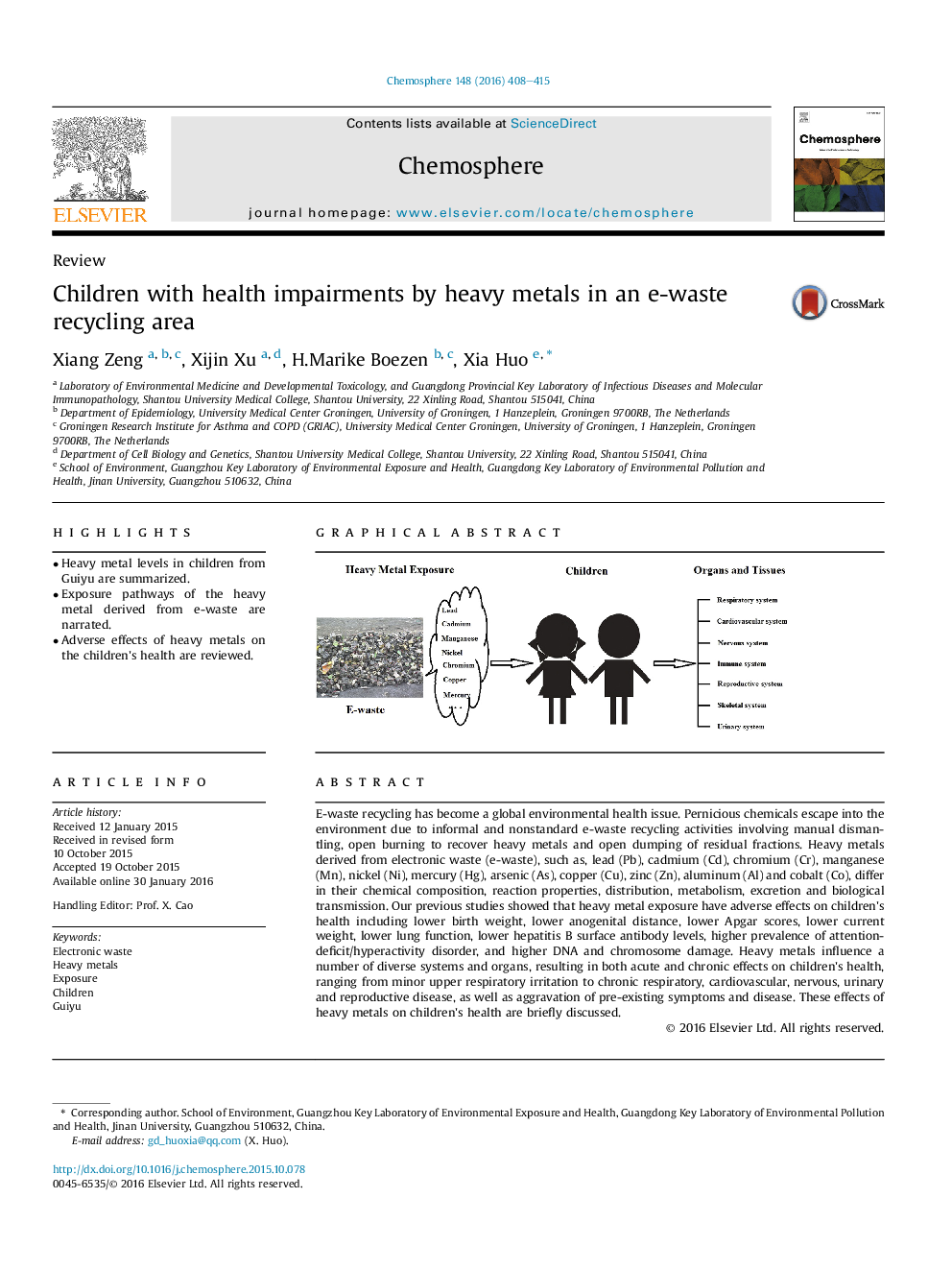| Article ID | Journal | Published Year | Pages | File Type |
|---|---|---|---|---|
| 4407828 | Chemosphere | 2016 | 8 Pages |
•Heavy metal levels in children from Guiyu are summarized.•Exposure pathways of the heavy metal derived from e-waste are narrated.•Adverse effects of heavy metals on the children's health are reviewed.
E-waste recycling has become a global environmental health issue. Pernicious chemicals escape into the environment due to informal and nonstandard e-waste recycling activities involving manual dismantling, open burning to recover heavy metals and open dumping of residual fractions. Heavy metals derived from electronic waste (e-waste), such as, lead (Pb), cadmium (Cd), chromium (Cr), manganese (Mn), nickel (Ni), mercury (Hg), arsenic (As), copper (Cu), zinc (Zn), aluminum (Al) and cobalt (Co), differ in their chemical composition, reaction properties, distribution, metabolism, excretion and biological transmission. Our previous studies showed that heavy metal exposure have adverse effects on children's health including lower birth weight, lower anogenital distance, lower Apgar scores, lower current weight, lower lung function, lower hepatitis B surface antibody levels, higher prevalence of attention-deficit/hyperactivity disorder, and higher DNA and chromosome damage. Heavy metals influence a number of diverse systems and organs, resulting in both acute and chronic effects on children's health, ranging from minor upper respiratory irritation to chronic respiratory, cardiovascular, nervous, urinary and reproductive disease, as well as aggravation of pre-existing symptoms and disease. These effects of heavy metals on children's health are briefly discussed.
Graphical abstractFigure optionsDownload full-size imageDownload as PowerPoint slide
